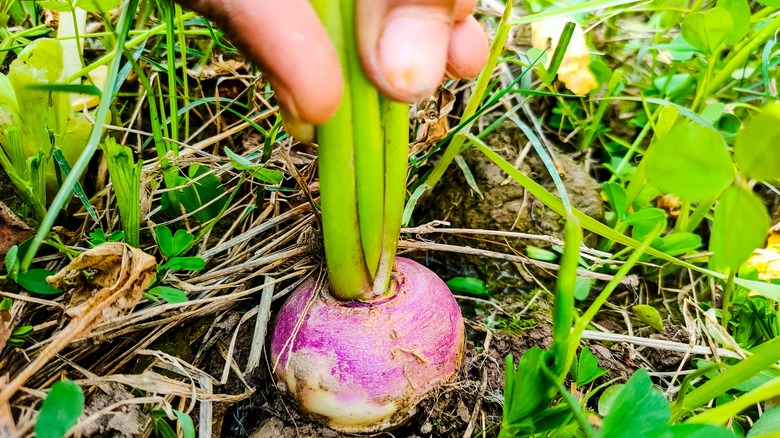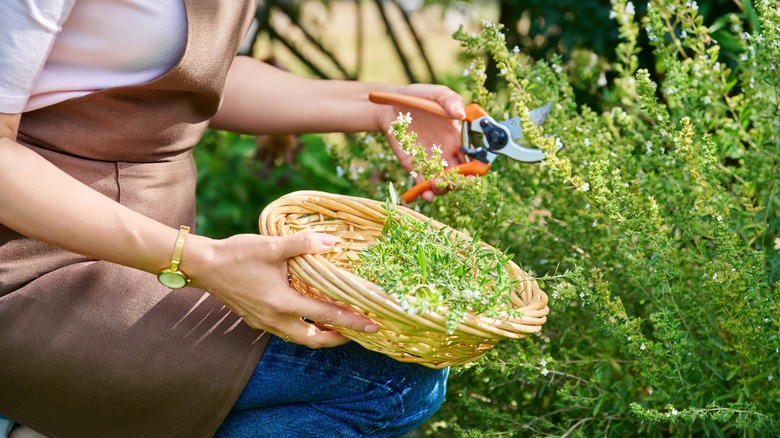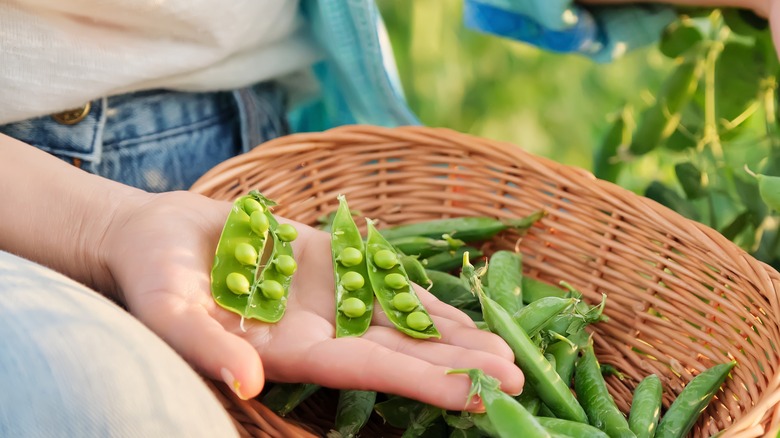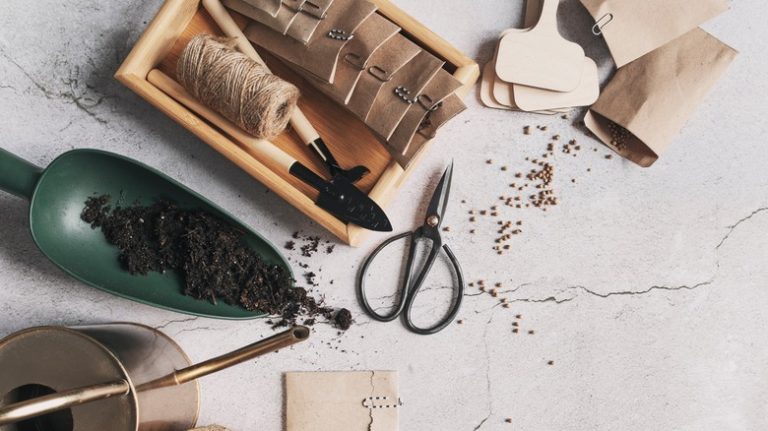Growing your own produce can not only save you money but also allow you to have a better understanding of what’s going into the food you eat. Peas are a great crop to grow in cooler climates since they are able to withstand frost. Peas can also be paired with other simple-to-grow veggies from your garden to create delicious recipes. When growing your own peas, they might benefit from another plant grown alongside them. Plants like beans, corn, and spinach are just a few of the companion plants that can be grown in harmony with peas.
Companion planting can greatly benefit your garden since they exchange nutrients to help each other grow, and attract or ward off beneficial and harmful critters. Some companion crops can inhibit weed growth or even make your crops taste better. Peas are a very popular companion crop because of their ability to pump nitrogen into the dirt. There are lots of plants that benefit from this nitrogen and will flourish when planted near peas — and these same plants can lend a helping hand to your pea pods.
1. Turnips

Turnips (Brassica rapa, variety rapa) pair very well with peas. Planting peas next to turnips is akin to adding fertilizer, except peas do it naturally. This is because of the nitrogen-fixing capabilities of peas. Peas also develop upward, whereas turnips send their growth down, therefore they occupy a different growing region. This prevents them from getting in the way of each other’s growth.
Turnips can aid in the growth of peas because they are also soil aerators, creating space in the soil for moisture and nutrients to flow to the peas creating a nice give-and-take between the two plants.
2. Tomatoes

Nitrogen is a critical nutrient in the development of tomatoes (Solanum lycopersicum). Vitamins, chlorophyll, and enzymes needed by tomatoes are all comprised of nitrogen. So, planting tomatoes with your peas will ensure that you also get bountiful yields of big beautiful tomatoes out of the marriage, in addition to a bushel of peas.
Tomatoes and peas also grow well in height together. This is because peas will climb up and through the tomato plant or right next to them without harming the tomato plant’s growth. This is especially helpful in gardens where space is scarce.
3. Carrots

Alvarez/Getty Images
There’s a reason for the saying “like peas and carrots.” Not only do these two veggies taste good together, but they are also excellent garden allies. Both plants require similar maintenance and do well in cool, damp environments. So, combining the planting of these two crops is advantageous for both plants and convenient. Peas also supply just enough nitrogen to carrots to help them flourish. Additionally, carrots (Daucus carota) need loosened soil in order to grow well. This type of soil will also help pea roots to suck up more water.
4. Spinach

YNG Pictures/Shutterstock
Spinach (Spinacia oleracea L.) is a very nitrogen-hungry plant. Soil that is abundant in nitrogen helps its leaves to grow big, leafy, and green. The peas can deliver this directly into the soil. Spinach and peas can also be easily grown together since they require similar conditions. They both grow in cooler climates and require soil that is rich in nutrients. Since peas grow nice and tall, they will block spinach from harsh direct sunlight. This can prevent your plant from something called bolting, which is when its seeds grow long and start budding with flowers or seeds.
5. Celery

Juan Jose Alvarado Mendieta/Getty Images
Planting peas and celery (Apium graveolens) together will prevent you from having to add extra nitrogen to your celery plants. But you’ll want to plant your peas ahead of your celery for maximum efficiency. While you can plant your peas as neighbors to your celery plant, they don’t grow at the same temperature.
It’s better to plant your peas in the cooler season so they pop up at the beginning of spring, and then plant your celery so they sprout when other conditions are warmer in order to let your celery soak up that nitrogen.
6. Corn

Tomasworks/Getty Images
Corn (Zea mays) can benefit greatly from nitrogen, especially if the dirt you grow your corn is lacking. But corn also offers a benefit to peas. Its tall stalks are great for peas to latch onto and grow on since peas are climber plants. These are also space-saving crops since they can be planted right in the middle of one another. But you’ll have to plant your peas first, in early spring, and let your corn, which can be planted once the soil warms up, catch up before they serve as a trellis for your peas.
7. Radishes

CardIrin/Shutterstock
Radishes (Raphanus sativus L.) and peas make great garden buddies because they don’t negatively affect one another’s growth. Peas develop at a slower rate than radishes. This gives the radishes ample time and space to properly grow without being disturbed by the peas.
They also have a nice give-and-take. Peas give the radishes nitrogen, while radish roots create space in the soil for plants to drink up enough water. Radishes also protect peas by attracting harmful insects away from the pea plants. This helps both plants to ward off infestations.
8. Cucumbers

Tomml/Getty Images
Since cucumbers (Cucumis sativus) and peas can both be grown on trellises, you can save space by having only one trellis that grows multiple crops. The boost of nitrogen in the soil from the peas will also help the cucumbers grow strong vines, too. Peas and cucumbers can be harvested at the same time or you can grow peas right before your cumbers are ready. Additionally, peas can prepare the soil for your cucumbers when planted as a cover crop. Either way, your cucumbers will benefit from the peas.
9. Eggplant

nnattalli/Shutterstock
Eggplant (Solanum melongena) is another plant that loves being near peas because of all the nitrogen it can absorb from the soil left by the peas. But there’s another very good reason to plant these two next to one another.
This is because of eggplant’s ability to repel pests like aphids, armyworms, cucumber beetles, and pea weevils. However, it is crucial that your eggplants aren’t overshadowed by the peas. Eggplants need to be in full sun and should get about six hours of light per day. So, don’t let your peas leave them in the dark.
10. Peppers

Andrea Dicenzo/Getty Images
Peppers (Capsicum) and peas can be planted in the same area since they both require soil with adequate drainage and at least 8 hours of direct sunlight. When grown in succession, peppers can benefit from having peas grown nearby due to the nutrients left in the soil. Peas should be grown during the cooler months. Once they are done, you’ll want to cut the plant just on top of the soil. When it’s time for your peppers to pop up, they’ll have more than enough room to thrive in the area where the peas used to be.
11. Beans

Tatevosian Yana/Shutterstock
Peas and beans (Phaseolus vulgaris L.) require similar conditions allowing them to be planted in the same environment. As climbing plants, these legumes can share the same trellis. Beans can also extend the growing season of peas, which are in season during the colder months through springtime. You can extend this season into the summer by using beans that have matured in the spring as cover for your peas. The shade from the beans will protect your peas from the extreme heat allowing them to grow a little later into the warmer months than they would naturally.
12. Basil

Nosystem Images/Getty Images
Basil (Ocimum basilicum) and peas are another veggie combo with an equitable relationship. Nitrogen left behind in the soil from peas helps basil to grow lush and fragrant. That strong scent in turn helps to keep peas safe from pests that threaten their growth. Thrips are one of these insects. They like to take up residence in the flowering part of the pea and feast off of the pea’s pod. But they will usually find a new place to call home when basil is around since they are repelled by the heavy-scented oils of the basil plant.
13. Mint

Yorven/Getty Images
Mint (Mentha) is another heavy consumer of nitrogen, but it also acts as a protector of the pea. The robust scent of mint will keep larger critters, like rodents, from making a meal out of your peas. Mice and rats are not fans of the smell. Mint is also known to be noxious to insects that use their sense of smell to track down their food. Bugs like the Mexican bean beetle, whiteflies, and aphids, which are enemies to the legume, will be thrown off by your odoriferous mint plants.
14. Savory

VH-studio/Shutterstock
Savory (Satureja hortensis) is a fragrant herb used to spruce up dishes, but it also has healing properties. It’s also sometimes used in a decorative manner, and you can even add pest repellent to its resume. Planting savory with your peas can help deter insects — like Mexican bean beetles — that like to eat up your legumes. This is because they are turned off by the strong scent of savory. Growing savory next to other plants can also help to boost the flavor of its companion plant, so your peas will taste better too.
15. Brussel sprouts

Stephen Barnes/Getty Images
Peas can be used as a cover crop and nutrient booster to help boost your brussel sprout (Brassica oleracea, variety gemmifera) yield. Cover crops are used as a blanket over the top of soil to help hold moisture in the dirt so that other plants can drink it up, as well as improve soil drainage. They can also help to prevent erosion and promote healthy dirt that can properly feed other crops. Brussels sprouts benefit from this nutrient-rich and properly drained soil, as well as the nitrogen-fix peas give off.




